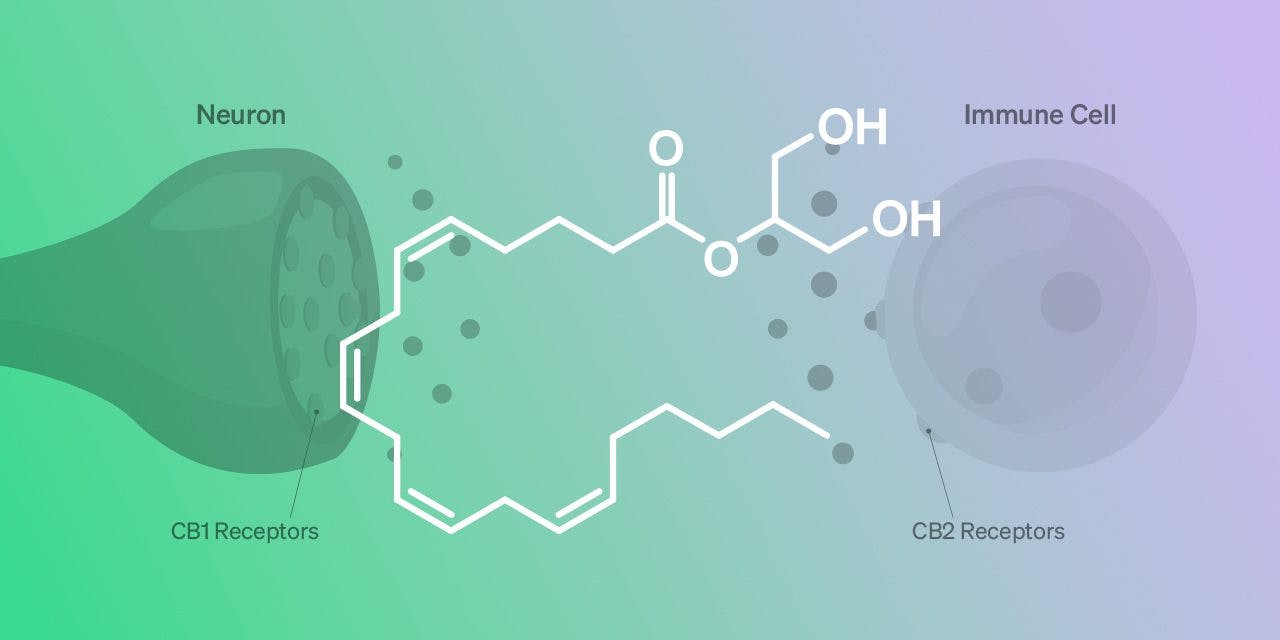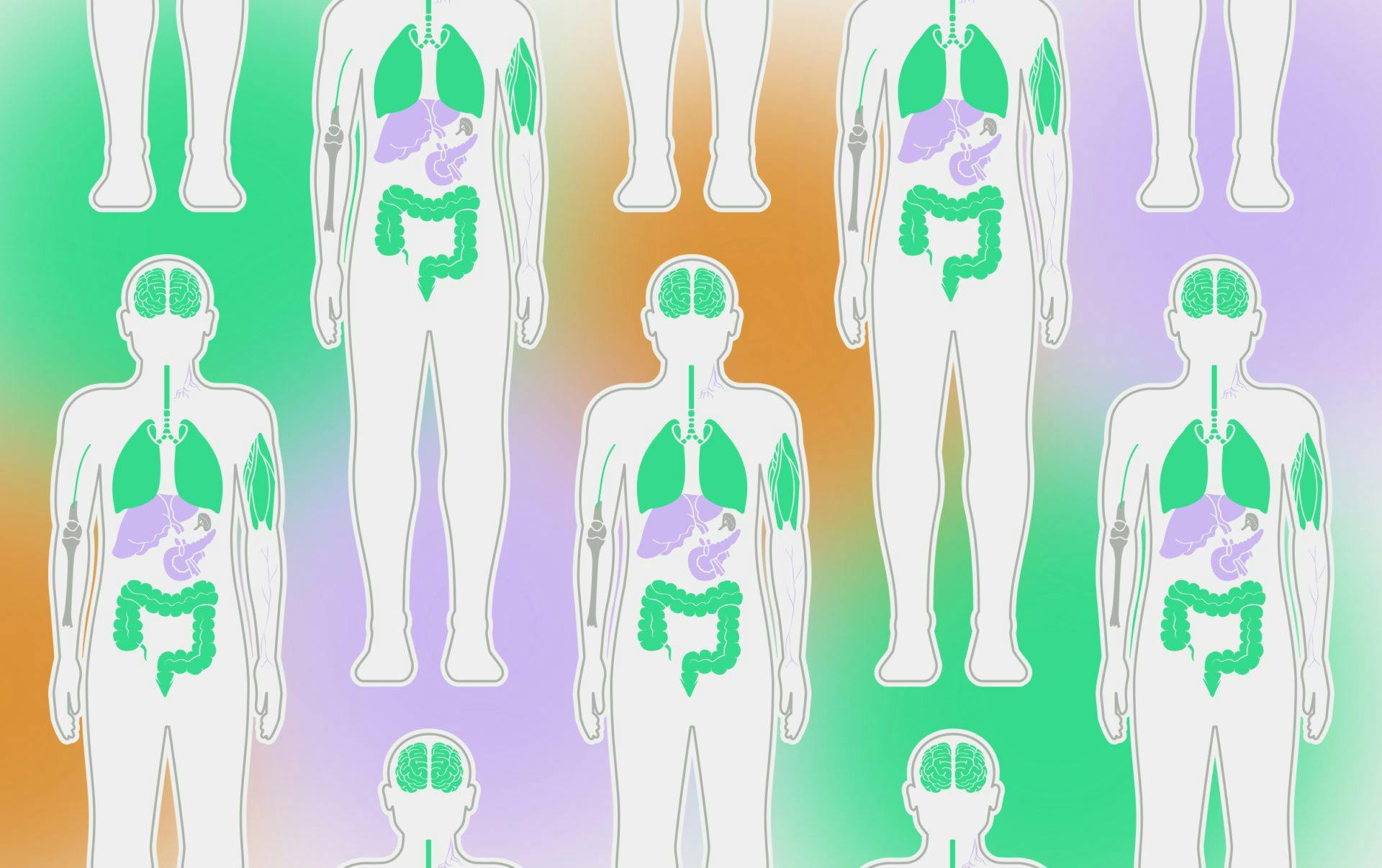What Is 2-Arachidonoylglycerol?

Article written by

Dipak HemrajHead of Research and Education
Content reviewed by

Dr. Lewis JasseyMedical Director - Pediatric Medicine
2-AG or 2-arachidonoylglycerol is an endocannabinoid that plays an essential role in maintaining balance in the body. It’s involved in various physiological functions, including pain sensation, inflammation, synaptic plasticity, stress response, cognition, emotion, and energy balance.
It was first discovered in 1995, making it the second endocannabinoid to be found (the first being anandamide). Let’s break down 2-AG’s role in the endocannabinoid system, how it works, and how to increase it.
Get your medical marijuana card
Connect with a licensed physician online in minutes.
2-AG and the Endocannabinoid System
2-AG is the most abundant endocannabinoid in the human body and is an agonist of both CB1 and CB2 receptors. It is found in high levels in the central nervous system (CNS) and helps regulate neurons in the brain and nervous system.
2-AG has several functions, including:
- Appetite regulation
- Immune system function
- Pain management
Basically, 2-AG is an essential part of your endocannabinoid system. Your body relies on endocannabinoids like 2-AG to maintain homeostasis (balance).
Download Free Guide to the ECS
How 2-arachidonoylglycerol Works
There is still much to learn about how 2-AG works, but it is thought that its primary function is as a neuromodulator. (Neuromodulators are messengers that neurons release in order to affect other neurons or cells.)
In this case, 2-AG acts as a “messenger” by binding to and stimulating the cannabinoid receptors causing them to become activated. For example, when 2-AG binds to a CB1 receptor, that signals to your body that it’s time to release certain chemicals to help relieve things like pain and inflammation.
Potential Health Benefits
As discussed, 2-AG is vital in ensuring your body functions properly. And altering your 2-AG levels could help manage several health conditions, including:
- Arthritis: 2-AG can help reduce pain and inflammation.
- Parkinson’s disease: Increasing levels of 2-AG can be neuroprotective.
- Multiple sclerosis: 2-AG can help control spasms.
- Anxiety and depression: Restoring 2-AG signaling can have anti-depressant and anxiolytic effects.
- Chronic pain: 2-AG can reduce the strength of the pain signals being sent.
- Some types of cancer: 2-AG may have an anti-tumor effect.
Potential Risks and Side Effects
Even though elevating 2-AG levels in the body can help mitigate pain, keeping 2-AG elevated over time can reduce the efficacy of 2-AG as a method of pain control. Activating CB1 receptors may also induce psychosis in those prone to it.
How to Increase 2-AG
You can increase levels of 2-AG in the body by inhibiting the primary enzyme that breaks it down, namely MAGL (monoacylglycerol lipase), although other enzymes also help with this task. But, until scientists get more of a handle on MAGL inhibitors and how they work, there are other things you can do to increase your 2-AG levels:
- Exercise
- Consume cannabis
- Get a good night’s sleep
- Follow a healthy diet filled with flavonoid-rich, anti-inflammatory properties (e.g., cherries, blueberries, avocados)
The Bottom Line
There is still a lot we need to learn about 2-AG. Just like many of the functions of the endocannabinoid system (ECS) still need to be discovered and/or explained, we need more research on 2-AG to learn how and why it works so well.
To enjoy the benefits that cannabis has on the body, connect with a member of Leafwell’s virtual clinic today to apply for a medical marijuana card.
Get Your Medical Card
Connect with a licensed physician online in minutes.


